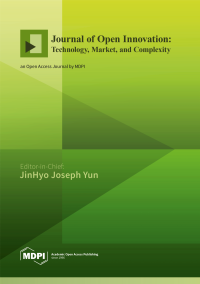Purpose: This research seeks to answer the basic question, “As a city evolves from an industrial city to a knowledge one, are its open innovation activities vitalized?”
Design/methodology/approach: In this research, we compare the total number of patent applications, the number of joint
[...] Read more.
Purpose: This research seeks to answer the basic question, “As a city evolves from an industrial city to a knowledge one, are its open innovation activities vitalized?”
Design/methodology/approach: In this research, we compare the total number of patent applications, the number of joint applicants of each patent, and the ratio of patents jointly applied, in four Korean cities—Daegu, Kwangju, Cheonann total, top 10 % patent applicants group among total patent applicants, and the lower 70 % patent applicant group among total patent applicants. The research included 144,625 patents submitted to the Korea Patent Office from 1981 to 2010.
Findings: As knowledge-based urbanization proceeds, the size of a knowledge city increases. The lowest 70 % of patent applicants (rather than the top 10 %) apply for more patents, and the breadth and depth of open innovation rises.
Research limitations/implications (if applicable): This research is limited to mutual patent applications as a target of open innovation. In the future, additional research will need to be conducted on various open innovation channels such as patent citation, intellectual property right transfer, licensing, and M&A.
Practical implications (if applicable): To maximize the beneficial characteristics of a knowledge city in a large city, the improvement of open innovation across the city is essential.
Social implications (if applicable): If strengthening open innovation by SMEs or start-ups is set as a corporate strategy or a government policy, it will be a source of development of knowledge-based urbanization and continued economic development of a knowledge city, as well as of the total knowledge assets.
Full article



